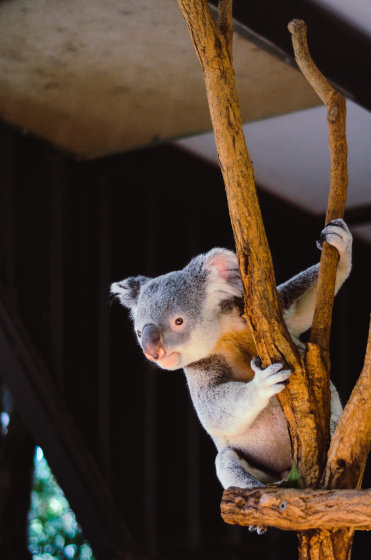Koala is under the attack of a virus and is now in a period of evolution

by
`` Evolution '' is often thought of as a phenomenon that occurs over thousands of years and tens of thousands of years, but researchers have announced that Koala's DNA is just evolving in a span that humans can observe It was. A paper on the evolution of the koala is published in Cell , published October 10, 2019.
The piRNA Response to Retroviral Invasion of the Koala Genome: Cell
https://www.cell.com/cell/fulltext/S0092-8674(19)31008-6
A virus is attacking koalas' genes.But their DNA is fighting back
https://theconversation.com/a-virus-is-attacking-koalas-genes-but-their-dna-is-fighting-back-124896
What a koala virus tells us about the human genome
https://www.statnews.com/2019/10/10/what-a-koala-virus-tells-us-about-the-human-genome-and-how-it-defends-itself-against-viral- invasions /
A creepy virus is forcing koalas to evolve before our eyes | Inverse
https://www.inverse.com/article/59977-koala-retrovirus-is-forcing-it-to-evolve
As it was reported in 2009 that 90% of Japanese koalas were infected with leukemia virus, researchers have long regarded the risk of koalas becoming more susceptible to diseases such as lymphoma and chlamydia. It was. Studies have shown that this is due to the koala retrovirus (KoRV-A), which is an endogenous retrovirus but retains pathogenicity.
Keith Chapel and his team at the University of Queensland have confirmed that a new type of immunity has developed in the Koala genetic code, in opposition to KoRV-A. Although such a phenomenon was known in theory, it was never observed.

by
In addition to infecting organisms, retroviruses are a group of RNA viruses that insert their own genome into the genome of the partner, and sometimes enter the germline . Chapel and co-workers have shown how KoRV-A can be passed from generation to generation in a new study, and a new section has been discovered that recognizes and inactivates viral RNA from koala DNA Announced. According to researchers, in sperm cells and egg cells infected with retroviruses, the rewritten DNA was recognized as the “molecular pattern” of the invader by the innate genomic immune response.
The immune system usually has both an innate response that recognizes the attacker and an adaptive response that recognizes the pathogen and produces antibodies. What is observed in Koala's immune system seems to be the same movement. However, in the case of a general immune response, the immune system attacks external viruses, but in the case of retroviruses, koalas consider their DNA as their target of attack. In other words, part of the gene is trying to inactivate the other part. And because the immune system is not yet complete, it seems that retroviruses cannot be completely disabled.

by camilo jimenez
On the other hand, scientists rarely have the opportunity to observe the evolution that is happening in front of their eyes, and some say that this research has brought a new piece to the unfinished puzzle.
Related Posts:







